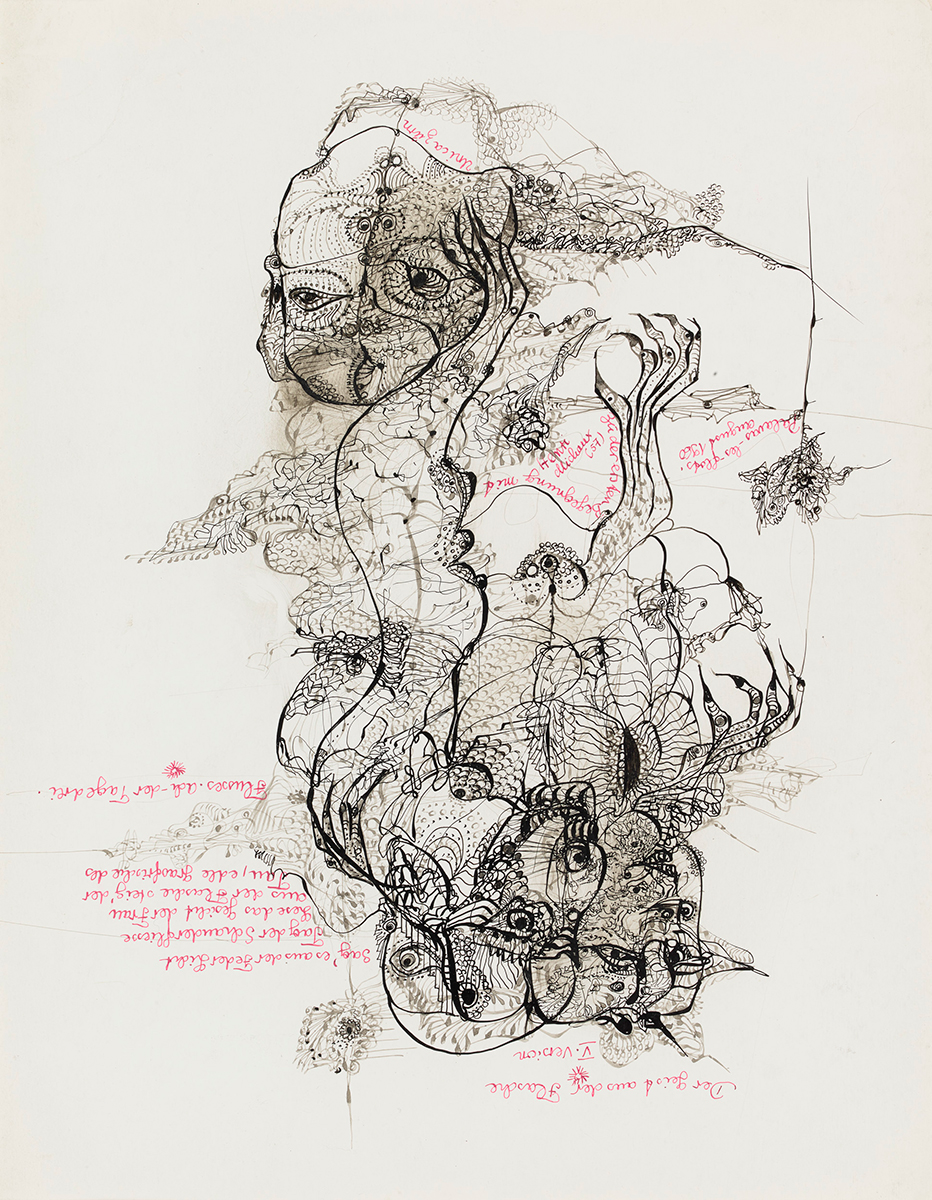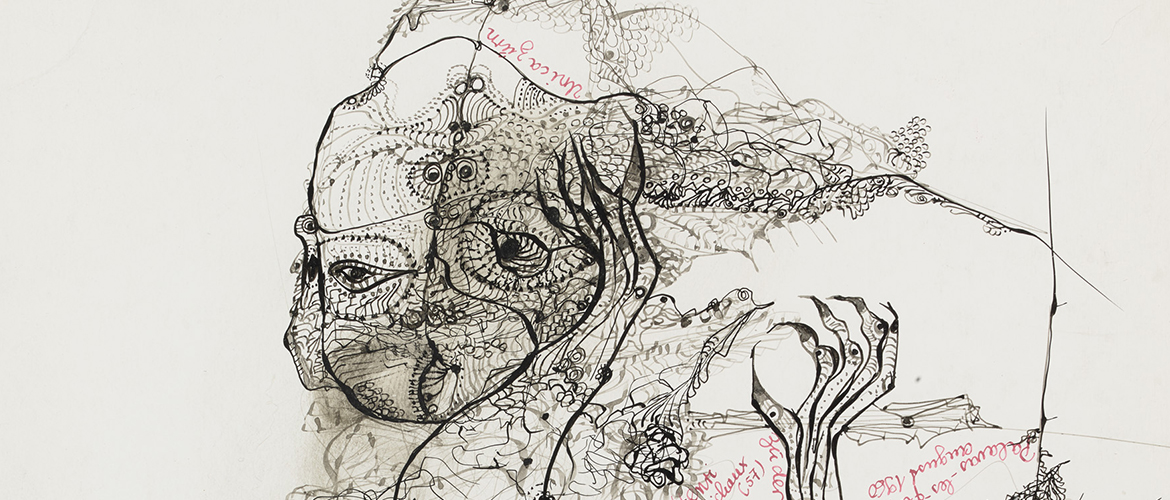Unica ZÜRN (Berlin, 1916 - Paris, 1970)
Der Geist aus der Flasche, 1960, pen and black ink, 31.9 x 24.5 cm, EBA 11279
This drawing, which was left in manuscript form, is, as the inscription at the top indicates, part of volume V of Oracles et spectacles, which also entered the collection. Dated August 1960 and located in Palavas-les-flots, this sheet is to be related, as Zürn specifies, to his first meeting with Henri Michaux in 1957. During her internment at the Sainte-Anne hospital in 1961, he gave her a school notebook with the dedication "Cahier de blanches étendues intouchées/Lac où les désespérés, mieux que les autres/Peuvent nager en silence, / S'étendre à l'écart et revivre" (Notebook of untouched white expanses/Lake where the desperate, better than others/Can swim in silence, /Spread out and live again) and in which she continued her drawing work for several years.
The anagrams, which are formed in a succession of words where the letters by a game of writing have been swapped, offer the reader an unusual and poetic universe. Contrary to the surrealists who practiced it essentially as a simple entertainment, they correspond for Zürn to a true aesthetic step which pays homage here to the poet of La Nuit remue (1934) and of Plume, précédé de Lointain intérieur (1938). Published by Gallimard in the "Blanche" collection, this text appears with the title in a red and black cover, the same colors used here by Zürn to distinguish his annotations from his drawn motifs.
The interlocking figures refer to the chapter "Fantastic Animals" in Plume, where "With simplicity, the fantastic animals emerge from their anxieties and obsessions and are thrown outside onto the walls of the rooms where no one sees them but their creator. The disease gives birth, tirelessly, to an unequalled animal creation" (Gallimard, collection La Pléiade, 1998, p. 581): Michaux evokes there with force hallucinatory visions which echo those that Zürn undergoes regularly, plunged "in a fantastic and extravagant carnival of the strange beasts and the monsters. In the hallucinatory masquerade of animals, hybrids, composite beings [...], the bodies metamorphose: they change molts: they disguise themselves: they cross-dress" (Anne-Marie Dubois, exhibition., Musée Singer-Polignac, 2014).

« Der Geist aus der Flasche » [L’esprit hors de la bouteille], 1960, plume et encre noire, 31,9 x 24,5 cm, EBA 11279



